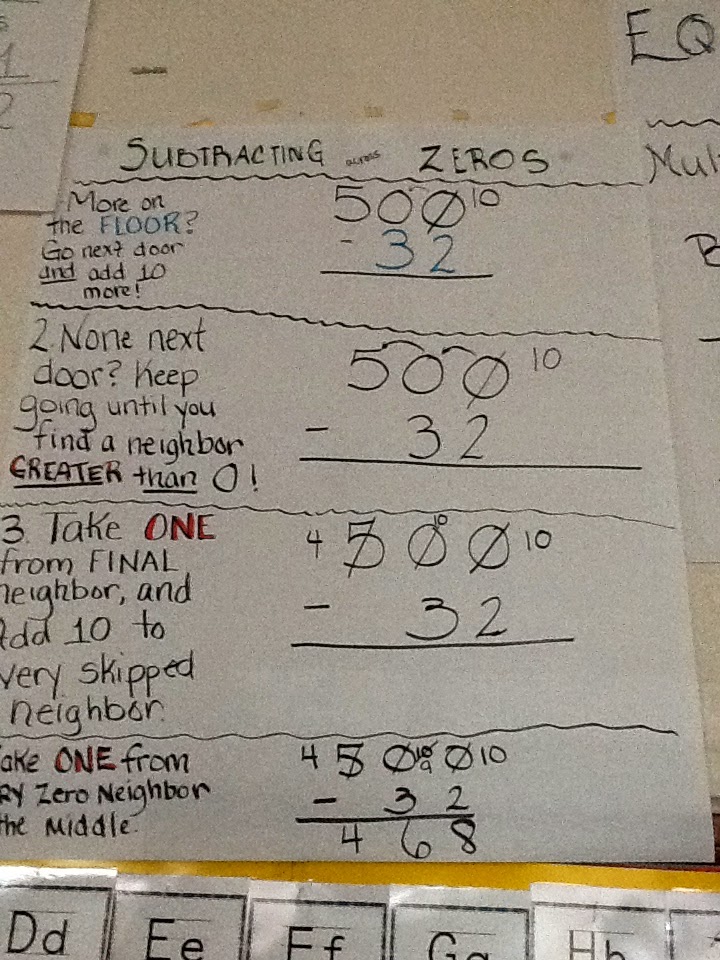It has been more than a month, but I was finally able to visit every classroom this morning to conduct a non-negotiable learning walk. Take a look at some of the great things happening around our building. Please take time to ensure that all non-negotiables are present in your classroom. Don't forget to look at previous blog posts to find ideas and examples of non-negotiables in classrooms or inspiration!
In terms of student work, there is an overall major improvement in the quality of rubrics and feedback posted across the building. Keep up the good work!
If you see an anchor chart, student work, or something else in the building you would like showcased for the staff, please send it to Tyler.Archer@slps.org.
This anchor chart in Ms. Richards' room helps students to easily identify the operation required for math tasks by giving examples of various terminology used.
Ms. Salmo's students used their names to practice addition and subtraction.
Ms. Tuthill's and Ms. Latta's students reflected on their own dreams and wrote about them as a part of celebrating Dr. Martin Luther King, Jr.
Ms. McCord's students recorded data from a scientific trial during an experiment.
Ms. Richards' students received descriptive feedback aligned to a supporting rubric.
Ms. Richards caught her students in action reading!
In Ms. Colacino's classroom, students can reference these anchor charts during their reading to support their comprehension.
To help students who were struggling with a complex subtraction task, Ms. McPherson created anchor chart that displayed both the directions and steps.
Ms. Williams' students received individual rubrics and feedback on their work.
Mr. Phoenix supports his Writing Workshop students with a "Parts of Speech" anchor chart that includes specific examples.
Ms. Allen's students wrote resolutions for the new year and had them posted in the hallway with a scoring guide.
Mr. Murphy's students completed claim evidence journal writing assignments to prepare for constructed response portions of the MAP test and to reflect on results of their experiments.
Ms. Jones created two anchor charts to help her students with basic skills they may need support with during class.
Ms. Weininger helped her students break down complex area problems by creating step-by-step anchor charts.
Ms. Weininger's students demonstrated their understanding of area formulas by creating and solving their own problems.
Ms. Selden's anchor chart helps students to think broadly about text structures and purposes for informational texts as they read.
























